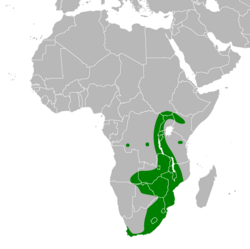| Common name | Scientific name and subspecies | Range | Size and ecology | IUCN status and estimated population |
|---|
| Montagu's harrier  | Circus pygargus
(Linnaeus, 1758) | Eurasia, winters in Africa and India
 | Size:
Habitat:
Diet: | LC
|
|---|
| Hen harrier  | Circus cyaneus
(Linnaeus, 1766) | Eurasia
 | Size:
Habitat:
Diet: | LC
|
|---|
| Northern harrier  | Circus hudsonius
(Linnaeus, 1766) | North America [11]
 | Size:
Habitat:
Diet: | LC
|
|---|
| Western marsh harrier  | Circus aeruginosus
(Linnaeus, 1758)
- C. a. aeruginosus (Linnaeus, 1758)
- C. a. harterti Zedlitz, 1914
| Europe, western Asia; winter range includes Africa and India.
 | Size:
Habitat:
Diet: | LC
|
|---|
| Eastern marsh harrier  | Circus spilonotus
Kaup, 1847 | Asia (migratory) | Size:
Habitat:
Diet: | LC
|
|---|
| African marsh harrier  | Circus ranivorus
(Daudin, 1800) | southern and central Africa
 | Size:
Habitat:
Diet: | LC
|
|---|
| Swamp harrier  | Circus approximans
Peale, 1849 | New Zealand, Australia, Pacific islands | Size:
Habitat:
Diet: | LC
|
|---|
| Papuan harrier
| Circus spilothorax
Salvadori & D'Albertis, 1875 | New Guinea
 | Size:
Habitat:
Diet: | LC
|
|---|
| Malagasy harrier
| Circus macrosceles
Newton, 1863 | Indian Ocean (Madagascar and the Comoro Islands) | Size:
Habitat:
Diet: | EN
|
|---|
| Réunion harrier  | Circus maillardi
J. Verreaux, 1862 | (Indian Ocean) Réunion Island
 | Size:
Habitat:
Diet: | EN
|
|---|
| Long-winged harrier  | Circus buffoni
(Gmelin, JF, 1788) | South America
 | Size:
Habitat:
Diet: | LC
|
|---|
| Spotted harrier  | Circus assimilis
Jardine & Selby, 1828 | Australia, Indonesia
 | Size:
Habitat:
Diet: | LC
|
|---|
| Black harrier  | Circus maurus
(Temminck, 1828) | southern Africa
 | Size:
Habitat:
Diet: | EN
|
|---|
| Cinereous harrier  | Circus cinereus
Vieillot, 1816 | South America
 | Size:
Habitat:
Diet: | LC
|
|---|
| Pallid harrier  | Circus macrourus
(S. G. Gmelin, 1770) | migratory: eastern Europe, Asia, Africa (winter)
 | Size:
Habitat:
Diet: | LC
|
|---|
| Pied harrier  | Circus melanoleucos
(Pennant, 1769) | Asia | Size:
Habitat:
Diet: | LC
|
|---|































